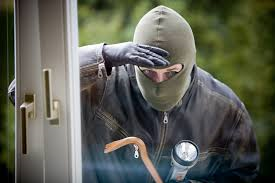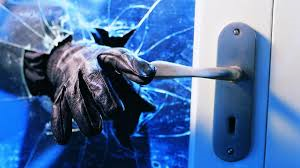Your home is your castle. Most people can’t even fathom having their secure hamlet compromised by a home burglary or invasion. The reality is, it can happen anywhere. In fact, it’s estimated that a home burglary occurs somewhere in the United States every 15.4 seconds.
Just this week, a home in Eureka, Missouri (a suburb in west St. Louis County) was invaded and burglarized while the homeowners were present. Early in the morning, the perpetrator entered an open garage and began stealing things. When confronted by the homeowner, the burglar pulled a gun and ordered the family back into the house. He then fled with valuables and one of the family vehicles.
To keep yourself, your family and your property safe, we’ve put together a two-part article with helpful tips on ways to avoid being a victim and what to do if you are home during a burglary.
It is important to first understand why burglaries happen and who commits them. The majority of home burglaries happen during the day when homeowners are typically away at work or school. The summer months of July and August have the highest burglary rates and February has the lowest rate. The majority of these crimes are committed by males under the age of 25 who are looking for small, expensive items that can easily be converted into cash – jewelry, watches, guns, small electronics, such as laptops, tablets and phones, and cash.
While some burglars will use some type of force to gain entry into a home, the majority will select the path of least resistance. A burglar’s selection process is simple. They look for an unoccupied home, with easy access points, the most cover, and the best escape route. Their entry of choice is an open garage door or unlocked back-door because these offer easy entry and a good amount of cover.
Making your home more difficult to enter is the first step in deterring a burglar. This means having high-quality window and door locks and using them – even when you are home. After that, add additional layers of security with alarm systems, good lighting, home safes, and neighborhood watch programs.
Avoid becoming a victim, by following these steps to keep your home safe and secure:
- Use solid core or metal doors for all entrance points.
- All door locks should be heavy-duty and installed with 4-screw strike plates and 3-inch screws. Deadbolt locks should have at least a 1-inch throw bolt and all knob-in-lock sets should have a dead-latch mechanism to prevent slipping the lock with a shim or credit card.
- Keep your garage door closed and the door from the garage into your home locked at all times, even when you are home.
- Keep cars locked at all times, even in the driveway or garage.
- Install a wide-angle 160◦ peephole no higher than 58 inches.
- Keep windows locked.
- For sliding doors, use a secondary lock mechanism – such as a dowel rod or stick in the track.
- Don’t hid a key under the door mat, on a ledge or under a rock – only leave a key with a trusted neighbor.
- Use interior light timers regularly – not just when you are out of town – in order to give the illusion of consistent home occupancy. These should be set-up on lights by front or back windows with the curtains/blinds closed.
- Exterior lighting should be strong enough to allow 100 feet of visibility – with emphasis on doorways and walkways.
- Exterior lighting that stays on all of the time is a dead giveaway that you are out of town. Exterior lights should be on timers or photocells that turn on/off automatically.
- Use infra-red, motion sensor lights on the rear of single family homes.
- Home alarms should be properly installed and maintained. Don’t keep the passcode on or near the alarm keypad. Be sure to prominently display the alarm company yard and window signs – some people think this signage is unsightly, but it is often the best deterrent.
- Buy and regularly use a home safe to store small valuables and important documents. Protect the safe pass code and change it occasionally. Avoid installing the safe in the master bedroom or master closet.
- Operation Identification is supported by many local police departments. They recommend engraving your driver’s license number (not your social security number) on small electronics, such as televisions, laptops, tablets, cell phones – so they can identify the items and locate you if the items are recovered. Many local police departments will loan out engravers for this purpose.
- Be a good neighbor – watch out for suspicious activity around your neighborhood, pick-up mail and papers for neighbors who are out of town and have them do the same for you.
- Notify your local police department when you will be out of town. Many departments will perform vacation checks on homes upon request.
Next up…
Home Security & Safety Part 2: Ways to keep yourself and your family safe if you are home during a burglary.









